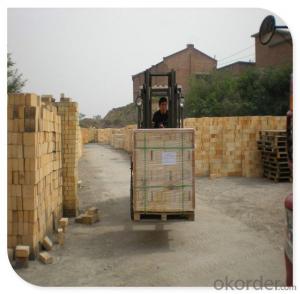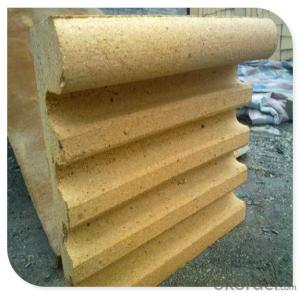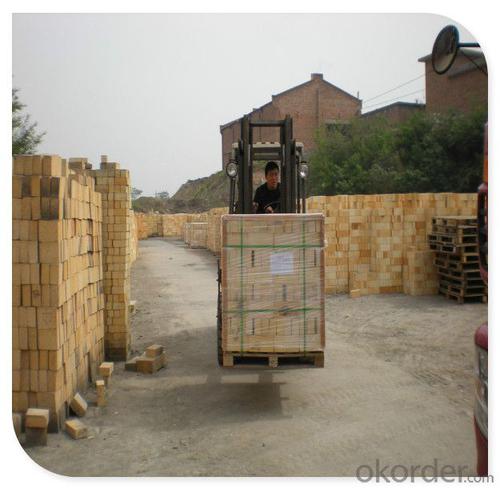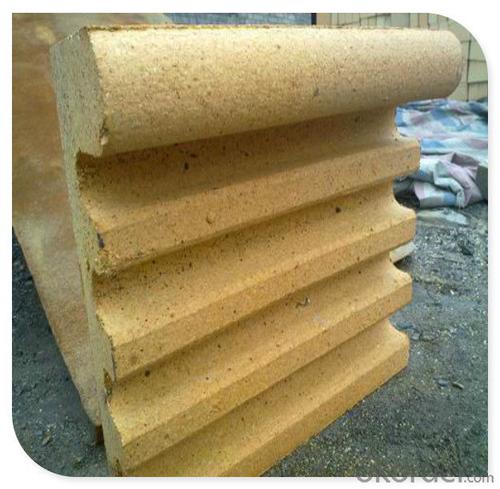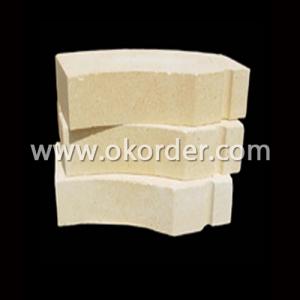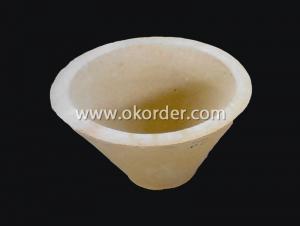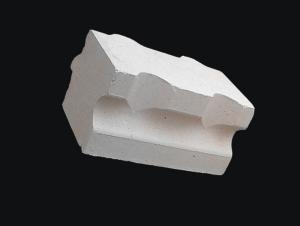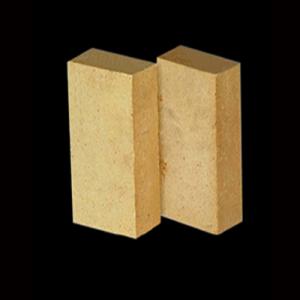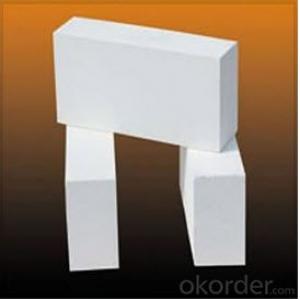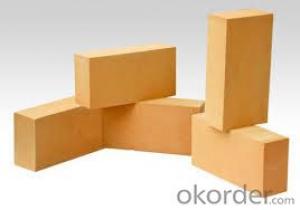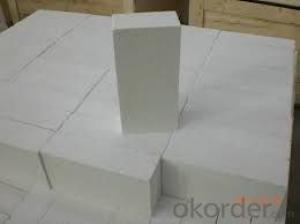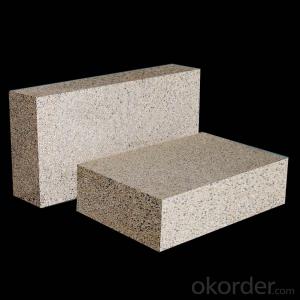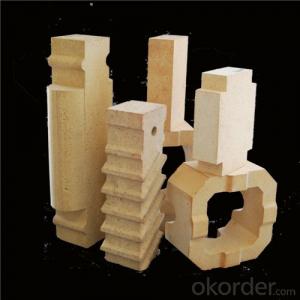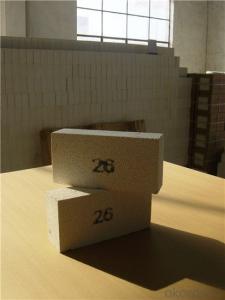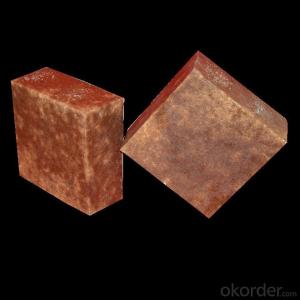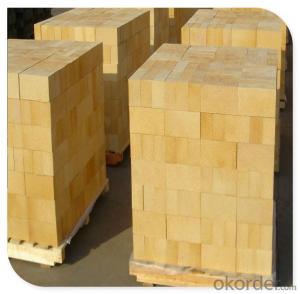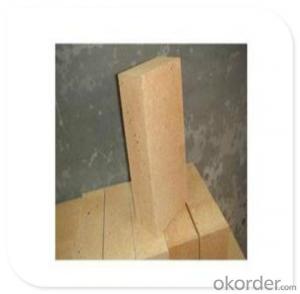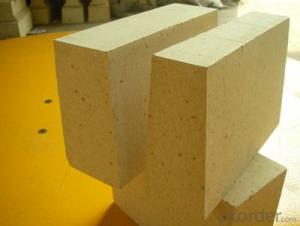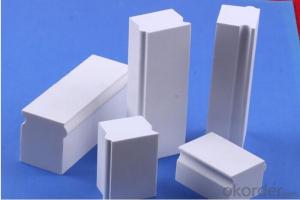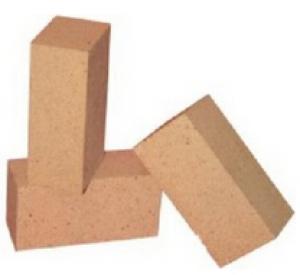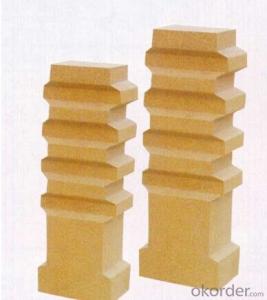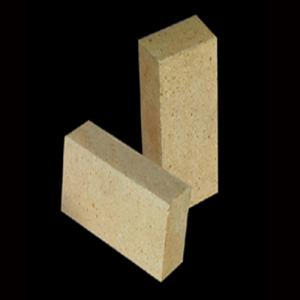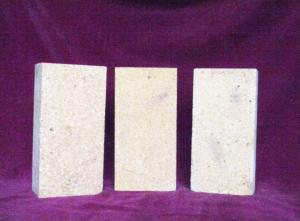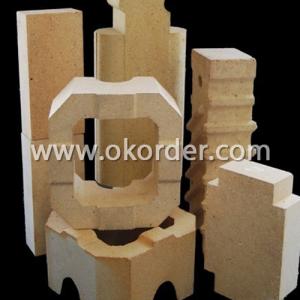High Alumina Refractory Brick / Clay Brick Used in Furnace Liner Refractory Fire Clay Brick
- Loading Port:
- Tianjin
- Payment Terms:
- TT OR LC
- Min Order Qty:
- 3 pc
- Supply Capability:
- 50000 pc/month
OKorder Service Pledge
OKorder Financial Service
You Might Also Like
Refractory Brick /Clay Brick used in Furnace Liner Refractory Fire Clay Brick
Specification:
1. Low thermal conductivity
2. Long service life, easy operation
3.cheapness
4.the most widely used
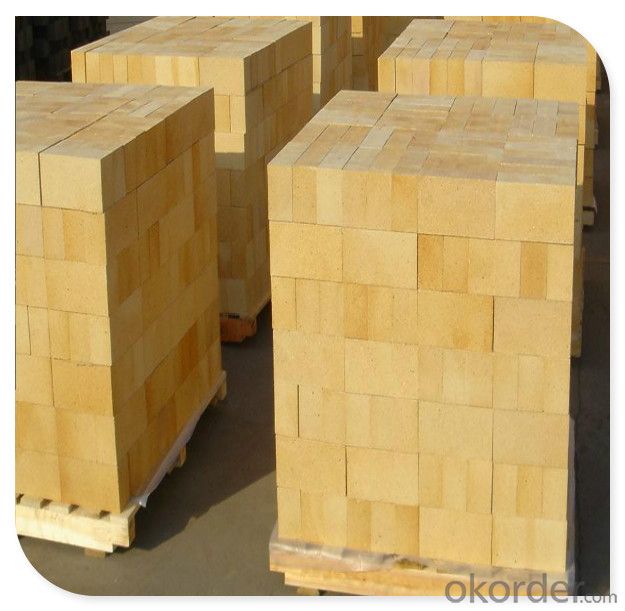
Items | Index | ||||
SK-38 | SK-37 | SK-36 | SK-35 | SK-34 | |
Al2O3 %,≥ | 75 | 65 | 55 | 48 | 42 |
54 | 49 | 44 | 40 | 20 | |
Apparent Porosity, % ≤ | 23 | 23 | 22 | 22 | 26 |
Refractoriness Under Load, °C ≥ | 1520 | 1500 | 1470 | 1420 | 1300 |
Linear Change on Reheating, [1500°C×2h]% | +0.1-0.4 | +0.1-0.4 | +0.1-0.4 | +0.1- 0.4 | 0-0.5 |
Refractoriness, °C ≥ | 1790 | 1790 | 1770 | 1750 | 17 |
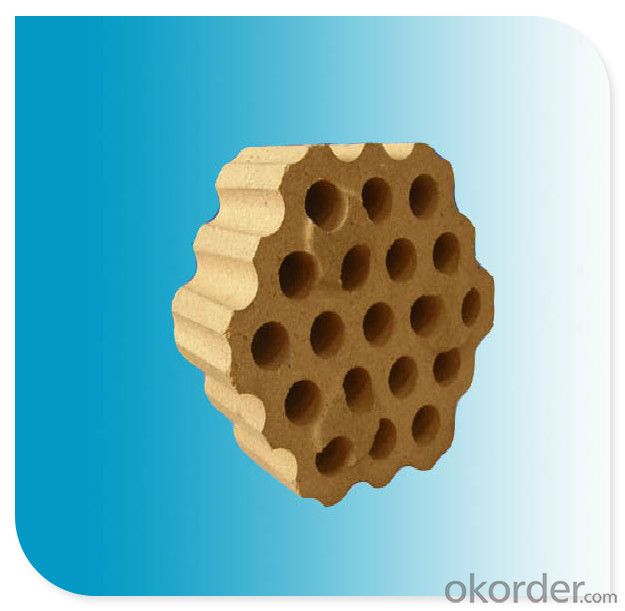
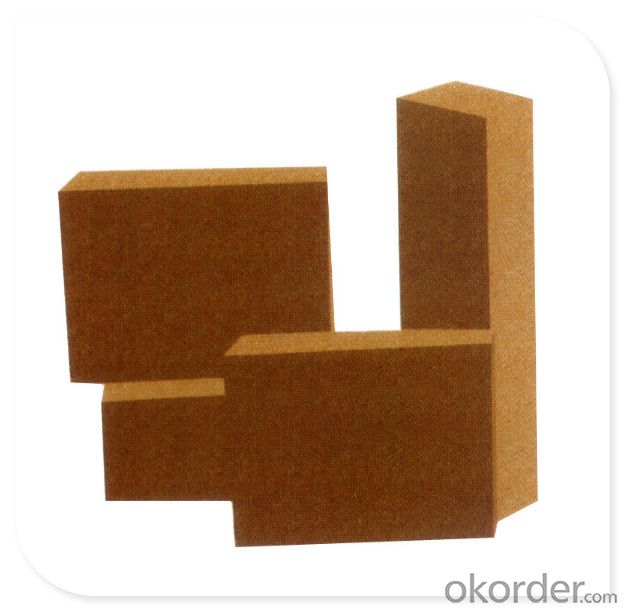
Features:
1. Low thermal conductivity, good thermal insulation performance.
2. Long service life, easy operation, could be shaped freely
3. Product specification: standard form, normal standard, shaped and special shaped bricks.
4. Can be used in various kilns because of its cheapness and general tray package. Among all of the refractory materials, it is the most widely used.
Application:
Refracory brick plant can be in direct contact with the flame,this insulating brick can be used as linings or as thermal preservation layers in various industrial furnaces and kilns in metallurgical industry, ceramic industry, chemical industry, machinery industry.
such as blast furnace, hot blast stoves ,electric arc furnace, cement kiln,melting furnace, ignition furnace, flue, refining equipment, heating equipment and piping, regeneration device, gas furnace, soaking furnace, annealing furnace, heat reaction chamber and other thermal industrial equipment.
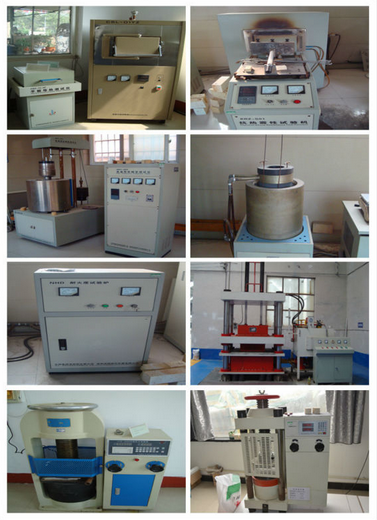
FAQ
1. Do you provide samples?
Yes, samples are free. Guarantee samples quality same as mass production quality.
2. What's the MOQ of trial order?
No limit,We can offer the best suggestions and solutions according to your condition.
3. Can we visit your company?
Of course,welcome at any time,seeing is believing.
4. Do you accept OEM?
Yes, we can do OEM.
5. What are the payment terms?
Usually T/T, D/A, D/P, L/C, Western Union ,others could be discussed .
6. How long is delivery time?
The delivery time will be determined according to the quantity of the order.
7. How are your products’ quality?
More than 20 years of production experience. The products will be strictly inspected before shipment, so the quality could be guaranteed.
8. How to slove the quality problems?
If the products are not confirmed to customer samples or have quality problems,our compay will be responsible to make compensation for it.
9. What is the service life of your bricks?
The service life of different bricks is unlike.It also depends on your using condition and method.
10. How about your company's certification?
ISO9001 and Test Report,also we could apply other necessary certification.
11. How about your price?
Quality will be guaranteed. Competitive prices based on same quality.
- Q: What is the standard classification of high alumina bricks and high alumina bricks?
- High alumina brick is a kind of refractory material in refractory brick products. It is made of refractory clay or other refractory material. It belongs to the product of Si Al System
- Q: What is the difference between T3 refractory bricks and high alumina refractory bricks?
- High aluminum refractory brick brick is all in one type of material classification, the material is AL2O3 high bauxite content above 55%, refractory brick by material into clay bricks, high aluminum brick brick brick corundum brick
- Q: Aluminum content 38, silicon content 55 What refractory bricks?
- Hello Only on behalf of the Zhengzhou colt as refractory product index your answer to this question is not entirely separate from the chemical index of aluminum content, silicon content and judgment, personally think that three types of refractory bricks may respectively is: Two: semisilica brick high alumina brick
- Q: Which is faster for heat transfer between corundum bricks and high alumina bricks?
- 75 high aluminum and 43 clay bricks, 75 single weight 4.5kg or more. 43 3.65kg or so, the use of temperature 75, high aluminum in about 1520, 43 of brick 1430 or so, the color of 75 pan white, 43 of the Loess color. In short, the difference is great.
- Q: What are the characteristics of high alumina bricks?
- A neutral refractory with an alumina content of more than 48%. Made from alumina or other raw materials of high alumina content; formed and calcined.
- Q: What are the alloy wear resistance materials?
- According to the composition of Beijing Naimo metal materials company will wear resistant metal materials is divided into the following five categories: one: high manganese steel series: high manganese steel (ZGMn13),
- Q: What is spalling resistant high alumina brick?
- Spalling resistant high alumina brick is a kind of high alumina brick. Antistripping high alumina brick with high grade bauxite and containing Zr02 synthesis as raw material, according to a certain proportion by high pressure molding system in sintering products, products with anti stripping ability, and have the anti erosion potassium, sodium, sulfur, chlorine and alkali salt, low thermal conductivity and other properties that is the transition zone of cement kiln and decomposition of ideal material with remarkable characteristics, the product is good thermal shock resistance, strong ability to adapt to the environment. It is used in the preheating or decomposing furnace, grate cooler and so on.
- Q: What kind of material is the general metal case?
- We usually discuss the electromagnetic radiation of computer enclosures, mainly RF radiation, followed by MF leakage.Switch signal of RF radiation from computer high-speed leakage, such as one of the energy radiation is CPU frequency, graphics, display output line, keyboard, is the source of the operating characteristics of the computer leaked out, is also the main part of computer security.For the absorption of radio frequency radiation, the best is the use of copper materials, the use of other metals can also, thickness enough on the line.The most vulgar description is that people can sit in the case is a good thing.
- Q: What is the high temperature limit of refractory bricks and refractory soil?
- According to the preparation process can be divided into bricks, brick, electric melting brick (Rong Zhuzhuan), the refractory insulating bricks; according to the shape and size can be divided into standard brick, ordinary brick, specific rotation. It can be used as high temperature building materials and structural materials for construction kilns and various thermal equipments, and can undergo various physical, chemical and mechanical changes at high temperature.
- Q: High alumina brick 80 with which high aluminum cement?
- In order to maintain a reasonable comprehensive lining, should adopt high quality aluminum refractory mud, such as Sichuan resistance card phosphate refractory mud, refractory clay, high alumina refractory mud PA-80 LN-75, if you use the card volume of Sichuan resistant refractory clay masonry, the effect is better.
Send your message to us
High Alumina Refractory Brick / Clay Brick Used in Furnace Liner Refractory Fire Clay Brick
- Loading Port:
- Tianjin
- Payment Terms:
- TT OR LC
- Min Order Qty:
- 3 pc
- Supply Capability:
- 50000 pc/month
OKorder Service Pledge
OKorder Financial Service
Similar products
Hot products
Hot Searches
Related keywords
